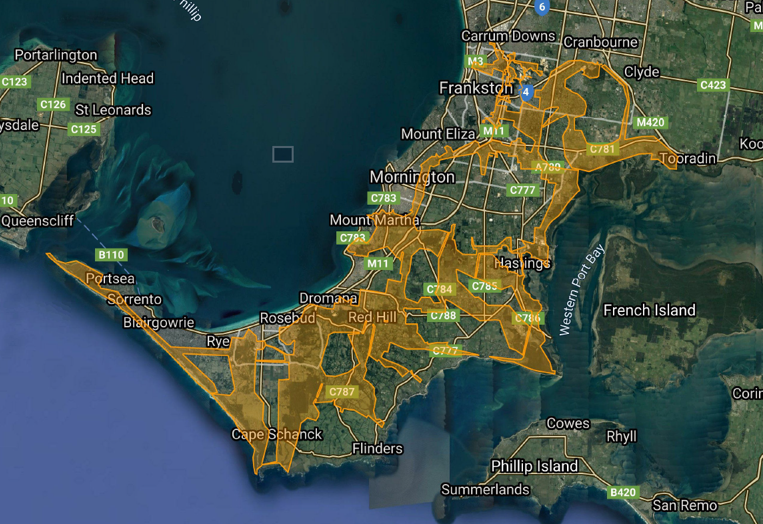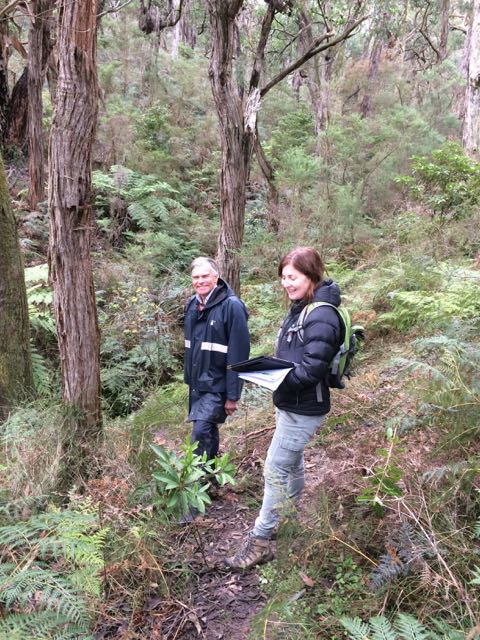Connecting fragmented remnants of indigenous vegetation to create biolinks across the Mornington Peninsula
Linking the Mornington Peninsula Landscape (LMPL) is an initiative of the Mornington Peninsula Landcare Network. LMPL biolink planning is based on an analysis of vegetation quality of the peninsula produced by the Arthur Rylah Institute, with input from local natural resource management professionals and ecologists. To date, biolink plans have been developed for eight out of ten catchment areas on the Mornington Peninsula. Next steps are the creation of plans for the two remaining catchment areas. Beyond this, planning will include extensions to completed biolink areas and strengthening connections within existing biolinks. The long-term vision is to collaborate with neighbouring municipalities to create regional corridors.
Fragmentation of the landscape over time has led to the decline of many native birds and mammals. As native trees, shrubs, and grasslands have been cleared to make way for farms, residences, and infrastructure, the unique fauna of the Mornington Peninsula has become particularly vulnerable to a lack of suitable habitat for foraging and breeding and predation by introduced pest animals such as foxes and cats. Isolated populations are particularly vulnerable to disease or disturbances such as high-intensity bushfires caused by a warming climate.
LMPL is the flagship project of the Mornington Peninsula Landcare Network which seeks to address the key threatening process of landscape fragmentation. Contributions to this project may go to biolink planning or funding for on ground works for LMPL developed plans.
This project will directly contribute to the Protecting Victoria’s Environment – Biodiversity 2037 (Bio2037) targets for control of pest herbivores, weed management and revegetation in priority locations (top 20% for the whole state with Strategic Management Prospects modelling). Within the Mornington Peninsula landscape, rabbit control is the top cost-benefit action for biodiversity, benefiting local plants, birds, mammals, amphibians and reptiles

Themes and Local Areas
| Primary Theme: | Native vegetation |
| Other Themes: | Native animals, Soil Health, Sustainable Agriculture, Waterways, Wetlands, Coasts, Communities, Climate Change |
| Primary Local Area: | Mornington Peninsula |
| Other Local Areas: | Urban Melbourne, Casey, Cardinia & Baw Baw, Western Port, Port Phillip Bay |
| Project location: | Mornington Peninsula-wide, covering all ten sub-catchment areas with a view to expand to neighbouring municipalities. |
| Scale of the project: | Landscape |
| New or continuing work: | Continuing/building on previous work |
Project partners
| Lead organisation: | Mornington Peninsula Landcare Network |
| Key partners: | Mornington Peninsula Shire Council, Melbourne Water, Department of Energy, Environment and Climate Action (DEECA), partnerships with local schools, tertiary institutions and community groups |
| Registered Aboriginal Party/s relevant to the project or its area: | Bunurong Land Council Aboriginal Corporation |
Investment opportunities
| Opportunities for investors within this project start from: | $$ (Tens of thousands of dollars) |
| Estimated scale of investment for full project implementation: | $$$ (Hundreds of thousands of dollars) |
| Estimated timeframe for full project implementation: | 10+ years |
Contribution toward targets
| Primary Regional Catchment Strategy targets and contribution to its achievement: | Major new biolinks – Significant, sustained revegetation programs have been undertaken from 2021 to 2050 and have created numerous major biolinks in priority locations across the region Waterways – Vegetation extent along waterways, Vegetation quality along waterways, Revegetation (significant contribution to overall RCS revegetation target) Native animals – Diversity of native animals, Threatened Animals (including listed species such as White-footed Dunnart, Australasian Bittern & Swamp Skink) Communities (Community Volunteering, Community Participation) Climate Change (leading to significant contributions to carbon sequestration) |
| Relevant Biodiversity 2037 goal: | Revegetation of priority areas for connectivity between habitats |
| Relevant National Landcare Program priority: | Soil, biodiversity and vegetation – Projects that will protect and enhance on-farm remnant native vegetation |
More information
Website: https://lmpl.org.au/
Contact the Mornington Peninsula Landcare Network, particularly the LMPL Project Coordinator Michele Sabto (email: linkingmplandscapes@gmail.com) and the Landcare Facilitator Chantal Morton (email: facilitator@mpln.org.au)



